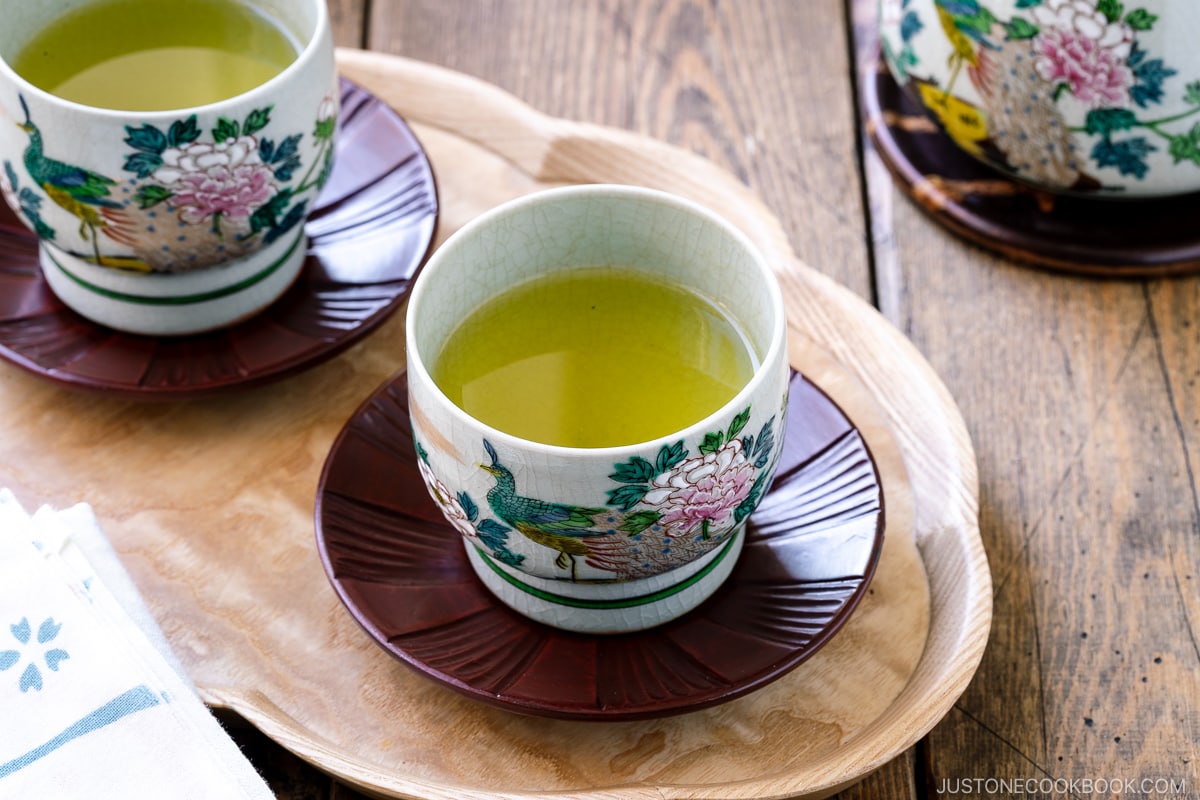How to Make Japanese Green Tea
4.9
(9)
Your folders
Your folders
Prep Time: 1 minutes
Cook Time: 4 minutes
Total: 5 minutes
Servings: 1

Ingredients
Export 4 ingredients for grocery delivery
Instructions
Step 1
Please note that you will need a kitchen scale and quick-read thermometer (or an electric kettle with temperature control) to make Japanese green tea. Why be so precise? To extract the best flavor from high-quality tea leaves without ruining them. Please read the blog post for more details.
Step 2
Typically, Japanese teapots can hold 200–360 ml of tea.
Step 3
Japanese tea cups range from 60–100 ml. Tip (optional): I highly recommend warming up the tea cups with hot water before serving to help keep the tea hot for a longer time.
Step 4
Use a kitchen scale to measure the loose tea leaves (here, I‘m using gyokuro). Weigh 0.35 oz sencha, 0.35 oz hojicha, 0.35 oz genmaicha, or 0.35 oz gyokuro. Then, add the loose tea leaves to your teapot. Tip: As long as you use the same variety of tea leaves, you can remember the approximate amount and skip using a scale next time.
Step 5
Next, heat water in a kettle to the temperature indicated above for the type of tea leaves you’re using.
Step 6
To the teapot, add the measured amount of hot water at the right temperature. I pour the hot water directly into my teapot set on a kitchen scale. For sencha, add 7.5 oz hot water at 176ºF (80ºC); for hojicha, add 8.5 oz hot water at 212ºF (100ºC); for genmaicha, add 8.5 oz hot water at 212ºF (100ºC); or for gyokuro, add 6 oz hot water at 140ºF (60ºC). Then, close the lid and let it steep according to the brew times below. Tip: As long as you use the same variety and measurement of tea leaves, you can remember the approximate amount of water to use and skip the scale next time.
Step 7
Sencha: 1 minuteHojicha: 30–40 secondsGenmaicha: 30–40 secondsGyokuro: 90 seconds
Step 8
Pour into individual tea cups and serve immediately. You can refill the teapot at least 2–3 times with the same tea leaves.